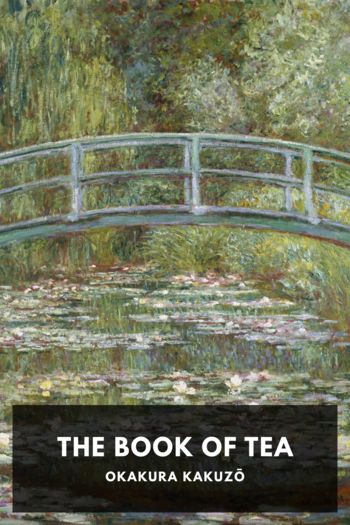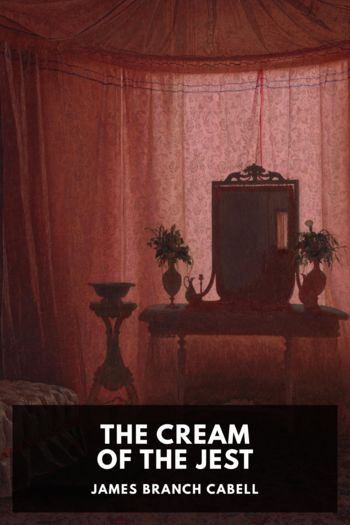Chocolate Sarah Moss (best fantasy books to read .txt) 📖

- Author: Sarah Moss
Book online «Chocolate Sarah Moss (best fantasy books to read .txt) 📖». Author Sarah Moss
Current health wisdom has underlined differences between good and bad chocolate. As chemists and nutritionists try to get behind the complex make-up of chocolate, ‘the darker the better’ is the growing consensus: cacao’s nutritious essence, as opposed to chocolate’s thick bulky substance, becomes the key factor in determining what is healthy about it. For several years now, chocolate’s mineral content has been believed to be beneficial to women. In her 1995 book Why Women Need Chocolate, nutritionist Debra Waterhouse argues that women crave chocolate in response to a genuine bodily need for these minerals. At the same time, however, the author also stresses that proper exercise and bodily discipline will also reduce cravings for the bad things in chocolate. The current interest in the health benefits of antioxidants has also fuelled chocolate’s rehabilitation as a healthy food. These substances, which have been highlighted for their ability to help prevent cell damage, are found in green tea, red wine and above all in dark chocolate. Côte d’Or now features a separate section of their website devoted to antioxidants, as well as an 86 percent bar specifically marketed to meet the need. Besides these health benefits, wisdom regarding chocolate’s various ill effects is also changing. In the same breath as they debunk the myth of chocolate’s aphrodisiac qualities, good chocolate proponentsare also keen to point out that other deleterious effects of chocolate, such as its fattening and addictive properties, are not really due to the substance itself, but to its various additives. As Doutre-Roussel puts the matter succinctly: ‘sugar is the evil in chocolate’. This ‘evil’ is necessary to keep the chocolate from being inedible, to be sure, and, as we shall see, ‘evil’ seems to be a necessary ingredient in enjoying chocolate for many people as well.
Besides embracing the antioxidants in ‘good’ chocolate, manufacturers are seeking to help combat the effects of ‘bad’ chocolate, while of course still selling it. Firms in Britain, most notably Cadbury Schweppes and Mars, launched in 2006 the ‘Be Treatwise’ campaign (www.betreatwise.org.uk). The campaign involves placing a ‘Be Treatwise’ reminder on the front of packets, and basic nutrition information on the back, including recommended daily amounts and suggesting daily exercise to compensate for treats. It is worth noting that judging from its imagery and layout, the campaign is aimed largely at women, both as primary consumers and as those making nutritional choices for children. They seem to be the ones judged most likely to stray from the path of righteousness when it comes to chocolate. Again, as we shall see, this is also part of what chocolate seems to be about.
Apparently, only women need to worry about overindulging in chocolate: a recent ad campaign in Britain.
Women, Indulgence and Sex:
Beyond Good and Evil?
Friedrich Nietzsche famously pointed to the distinction to be made between the different opposites of ‘good’, ‘bad’ and ‘evil’. While ‘bad’ is an aesthetic value denoting ugliness or poor quality, ‘evil’ is a moral value. He argues that upon closer inspection, what we call ‘evil’ is often aesthetically good precisely because it is able heroically to break through the bounds that morality places on beauty. Much of the lore surrounding high-end chocolate equates the aesthetic goodness of ‘real’ chocolate with certain notions of moral goodness based around purity and discipline. While it pleases the senses, ‘good’ chocolate does not make you crave sex or get fat or do anything else that would imply losing control of your body. Most popular discussions of chocolate do not compete for this moral high ground, however. Instead, chocolates across the board tend to invoke the ‘evil’ nature of chocolate as its best quality. Perhaps ironically, given Nietzsche’s reputation as a misogynist, this applies particularly to the way chocolate is marketed to women.
Ideas of chocolate as a dark, seductive power are of course long-standing, and have been through a number of transformations. Rowntree’s Black Magic chocolates, which first appeared in 1933, invoked this dark power explicitly. Advertising from the 1930s through the 1950s sold the chocolates as an exquisite treat well-suited for men to use in wooing upper-class women. Such upper-class fantasies generated by a relatively inexpensive product of course also spoke to the class and economic uncertainties of their era. But while some of the ‘dark power’ was clearly class and money, sex was also a key implication and desired outcome. In one advert from 1934, a woman writes of the chocolates she has received from her beau: ‘We silly creatures are always so thrilled when a man thinks us worth the very best. Imagine it, a big box of these new Black Magic chocolates on my dressing table. My dear, each choc’s an orgy!’
In more recent years, chocolate advertising has eliminated the middleman, as it were, and marketed chocolate directly to women for their own pleasure. A recent trade publication argues that specialized addresses to women (alongside fair trading) represent one of the fastest-growing trends in chocolate marketing. Rebranding chocolate as healthy and not incompatible with keeping one’s figure is one element of this. But another side is also clearly visible. Indulgence in chocolate is portrayed as a means of liberation and self-satisfaction. Women who buy chocolate for themselves, it would seem, have moved beyond good and evil. The US firm Seattle Chocolates has recently produced a new line of ‘Chick Chocolates’ aimed at women who pursue their own pleasure. According to the firm, these chocolates ‘satisfy a woman’s intense sweet craving while providing a good giggle. In a stylish box reminiscent of cosmetic packaging, Chick





Comments (0)